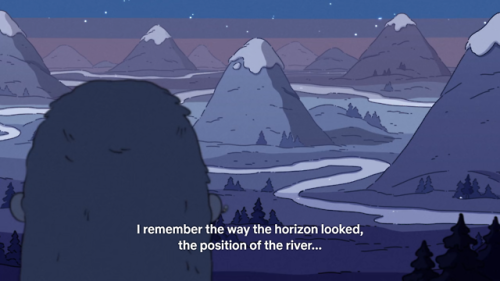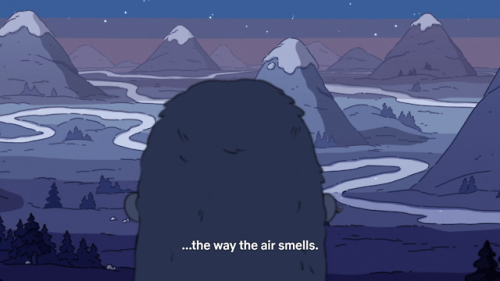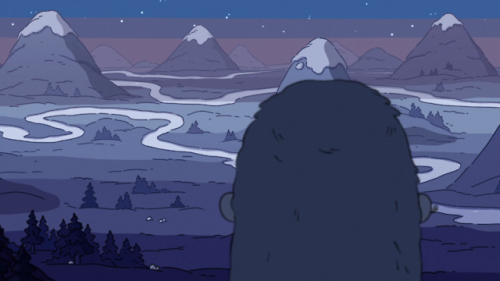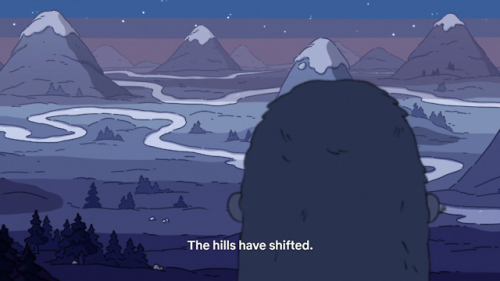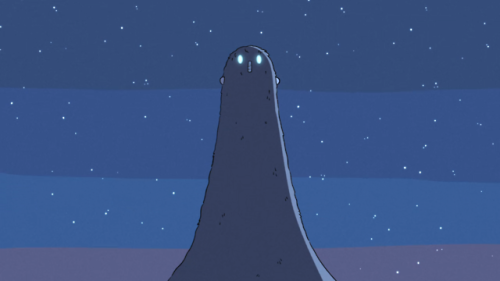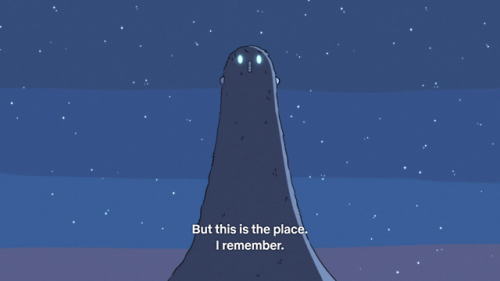the-tao-of-fandom: uovoc: #THIS SHOW GETS SCANDINAVIAN FOLKLORE IN A WAY A LOT DON’T #IT PLAYS AROUN
the-tao-of-fandom: uovoc: #THIS SHOW GETS SCANDINAVIAN FOLKLORE IN A WAY A LOT DON’T #IT PLAYS AROUND WITH IT A GREAT DEAL #BUT IT *GETS* IT # hilda # hey tao if you feel the urge to write a treatise on what qualities of scandinavian folklore hilda gets right that other media doesn’t # I would absolutely read it # I want to know # what is the flavor (via @uovoc) hhhhhhhhHHHH YOU ACTIVATED MY TRAP CARD I realize that a lot of the references I’ll make won’t track for you if you don’t live in scandinavia/the nordics area or aren’t familiar with our folklore but w/e. Read some of these books, they’re really good. For me, watching Hilda is kind of like what I imagine it might be to watch Over the Garden Wall in terms of local folklore, except for like spooky Americana. At least that’s what i’ve gathered from my american pals who have seen it. I love OtGW, it’s spooky and comfortable and captivating as hell. But it doesn’t play right into all of my cultural familiarities the way Hilda does. Not to be danish or anything, but this show has some mad hygge going on. It also goes off script a lot, it doesn’t follow any “canon” completely (any folklorist will tell you there is no ‘true’/’original’ version of any story, every version is as valid as the next one). But despite borrowing what it likes and changing the rest, it. Well, it feels true. . Let me explain. This is particularly interesting because it’s being written and produced by anglophones of various descriptions. A current trend in a lot of english language urban fantasy is to describe everything under the sun as “fae” or “fairies”. Now this can be a pretty fluid term but i think we can recognize that after a while the word becomes completely inappropriate and loses all meaning in the context. It definitely did when i saw someone write about japanese Kappa as ‘fae’. Now, I’ve read a lot of great books of the fae/fairy description. But the popularity of them in urban fantasy has also inspired a great many tepid hastily-written knock-offs, who sometimes try to apply one kind of understanding of folklore to traditions from different places that work in totally different ways. Hilda reminds me of a lot of the stuff I grew up with - not just folk tales, although it employs a lot of them, such as stories of the lindorm, the nisse, the trolls, the hidden people, draugar and so on. But in tone it also reminds me a lot of Tove Jansson’s work, particularly the Moomin books, and of Astrid Lindgren’s books - particularly Ronja and Pippi Longstocking. There’s also an icelandic children’s book EVERYONE reads when they’re kids that’s just a very simple love story between two trolls, that also really fits this tone. I could go on, but what they have in common is an appreciation of the magic of every day things, and a certain disregard for that terrible tendency of childrens’ book authors to moralize at kids. Something that put me off once I started to read books translated from english as a kid was that it felt like every story was trying to Teach You Something. You often had the feeling that the author was pulling you out of the story to ask you in a saccharine sort of way, “And what did we learn today, kids?” One thing you’ll notice about Hilda is that she often helps people and tries to do right by them, but doesn’t get rewarded for it. In fact, it often gets her into way more trouble than if she’d left them alone. But unless people wrong her, she help them out anyway (and sometimes even then). It’s not about Being Good, it’s just that people need help, and you’d want someone to reach out a hand if it was you. It’s also that most of the people or creatures she gets into conflict with aren’t actually evil or morally corrupt. Usually they’re just inconsiderate or have a different view of the world or a totally different set of priorities. It’s true, sometimes they’re absolutely terrible, but it’s usually not because they are the Bad Guys and our heroes are the Good Guys. The Mara being a bunch of insecure teenage girls trying to make themselves feel better by making other people feel worse totally tracks for me, for example. Creatures who seem antagonistic may behave in very strange ways but their reasons may be quite everyday. For example, even though there’s no stories about the hidden people being obsessed with bureaucracy, it feels true when the show adapts them in such a way - one of the things you’ll learn as a kid reading scandinavian childrens’ books is to be cynical re: the reliability of local politicians. Characters like the Wood Man, meanwhile, may be anti-social in a very particular way (he reminds me of Little My and Snufkin from the Moomins in equal parts) but aren’t actually bad. They ever actually stop acting like that, you just come to a better understanding of them over time and realize they’re pretty great - even though they’re thoroughly strange and do very questionable stuff sometimes. Adults, instead of being completely incompetent or antagonistic, are also just people doing their best and occasionally make mistakes like everyone else (shout-out to Johanna for being maybe the only cartoon mom i’ve encountered in a While who isn’t a totally incompetent person who pays no attention to her kid) What english-language stuff building off’f scandinavian folklore (i actually just gave away half my YA books so i can’t recall any specific titles, but there were several on that theme) tends to do is that it makes these creatures/people all ~ethereal~ and ~mysterious~ which, you know, is fine and something I quite enjoy. It’s just that a lot of scandinavian/nordic folklore is so thoroughly everyday. Yeah, trolls eat people, but you can scare them away by ringing the church bells, kind of like you’d get rid of a big angry dog. Yeah, sometimes you raise ghosts but if you beat them in a wrestling match they gotta go back into the grave. Yeah, there’s a giant taller than a mountain who comes and stares at your house in the night - because he’s waiting for his friend to show up and you just happen to live there. Early folklorists liked to pretend that every single myth/folktale/story was in some way Symbolic of something greater, like natural phenomena or social problems or Great Cosmic Questions. They can be that, but this is the flip side. The hidden people living next door are a metaphor for your fussy neighbor who complains when you turn the TV up. Your house being wrecked by a giant is symbolic of the indifferent government re-zoning your neighborhood. There’s a hairy guy sitting on the sidewalk begging? Might be a nisse or a homeless person - or both. But really nothing has to be symbolic of anything at all for these stories to work out - they’re just stories about people living their lives, it’s just that a lot of these people are trolls or giants or tiny elves or forest spirits. What gives it that feeling of magic and mystery is seeing something that you don’t understand and that lives such a different life from yours. And then slowly gaining a better understanding of them. The first two episodes do a great job of this, contrasting the hidden people to Hilda to Jörgen the giant - their experiences of the world are very different simply because of something as simple as size. But in the end Hilda starts to understand that she plays a similar role to the elves as Jörgen plays to her and her mom. Folkloric people aren’t totally incomprehensible; they’re really not that much unlike us, even if we don’t always see eye to eye. -- source link
Tumblr Blog : www.tumblr.com
